Computer Basics
Getting to Know the OS
Getting to know your computer's OS
The screen you see when your computer has finished starting up is called the desktop. Depending on what kind of operating system you have, the desktop will look different, but it generally consists of menus at the bottom, top, and/or sides of the screen, with the rest of the screen containing a desktop background (or wallpaper). The desktop background area can also contain any files, applications, or shortcuts you want to have quick access to.
Watch the video to learn about the Windows desktop.
Click the buttons in the interactives below to learn more about the Windows and Mac OS X desktops.
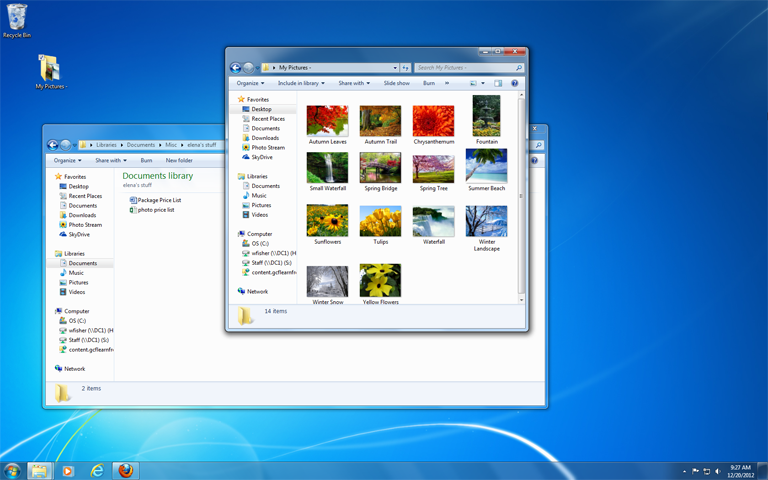
Start Button
Click the Start button to access the Start menu, which lets you access applications, files and settings. You can also use the Start menu to shut down your computer.
The newest version of Windows, Windows 8.1, has replaced the Start menu with the Start screen. You'll use the Start screen to open programs or search your computer.
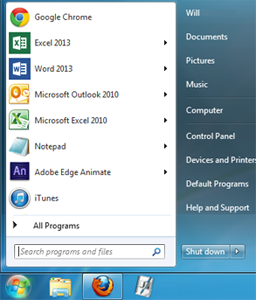
Open Folders
When you double-click a folder, it will open in a specialized program called Windows Explorer. This allows you to navigate to the specific folder or file that you want.
Desktop Background
The Desktop background (or wallpaper) allows you to personalize your computer. You can choose a built-in background, or use one of your own images.
Folders on the Desktop
You can keep folders, files, or shortcuts on the Desktop so that they will be easily accessible.

Recycle Bin
When you delete a file, it is moved to the Recycle Bin. This allows you to recover the file if you change your mind. To permanently delete the file, you will need to empty the Recycle Bin.

Date and Time Settings
On the right side of the taskbar, you will see the date and time. There will also be shortcuts to different settings, such as internet settings and sound volume.

Taskbar
The taskbar contains the Start Button, shortcuts to applications, the date and time, and more.
When you open a program or file, it will appear on the taskbar, and you can easily switch between different programs by selecting them on the taskbar.
![]()
Shortcuts on the Taskbar
Some programs will have shortcuts on the taskbar for easy access. In this example, there are shortcuts to Windows Explorer, Windows Media Player, Internet Explorer, and Mozilla Firefox.
![]()

Notification Center
The Notification Center displays an alert when you've received an update. It can be customized to let you know of upcoming appointments, tweets, news, and other real-time events. It remains hidden until you click its icon in the top-right corner.
The Notification Center was introduced in Mountain Lion and is not available in earlier versions of OS X.

Spotlight
When you click the magnifying glass icon, it will open Spotlight. Spotlight allows you to find a file or application by typing the name (or just part of the name).
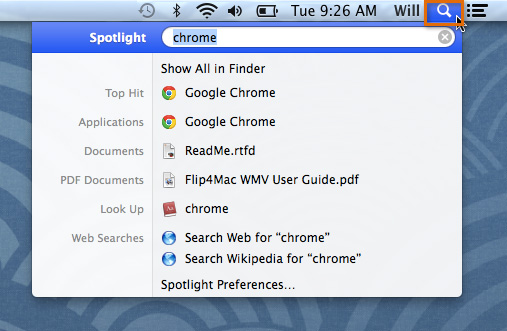
Date & Time and Settings
On the right side of the menu bar, you will see the date & time, along with shortcuts that you can click to adjust settings such as sound volume.
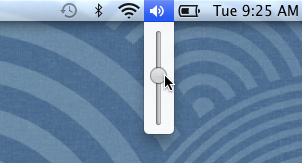
Menu Bar
The menu bar will contain different menu options depending on which program you're using. In this example, the active program is Finder.

Apple Icon
In the top-left corner of the screen is the Apple icon, which you can click to access your System Preferences, recent documents, and more. You can also use it to shut down your computer.
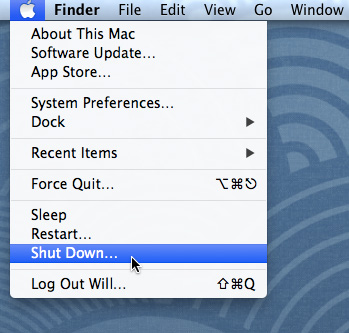
Desktop Background
The desktop background (or wallpaper) allows you to personalize your computer. You can either choose a built-in background, or use one of your own images.
Folders on the Desktop
You can keep folders, files, and shortcuts on the desktop so that they'll be easily accessible.
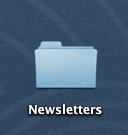
Trash
When you delete a file, it is moved to the Trash. This allows you to recover the file if you change your mind. To permanently delete a file, you'll need to empty the Trash.

Dock
The Dock can contain shortcuts to applications, files, or folders. If you have multiple programs open, you can use the Dock to quickly switch between them.
Launchpad
Launchpad allows you to see a list of all of your applications. It is designed to make it easier to find and organize your applications.
Launchpad was introduced in OS X Lion, and it is not available in earlier versions of OS X.
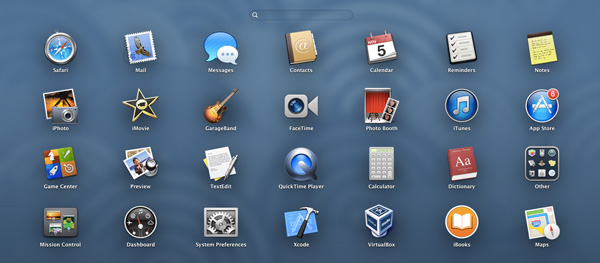
Open Folders
When you double-click a folder, it will open in a specialized program called Finder. This lets you navigate to the specific file or folder you want.







